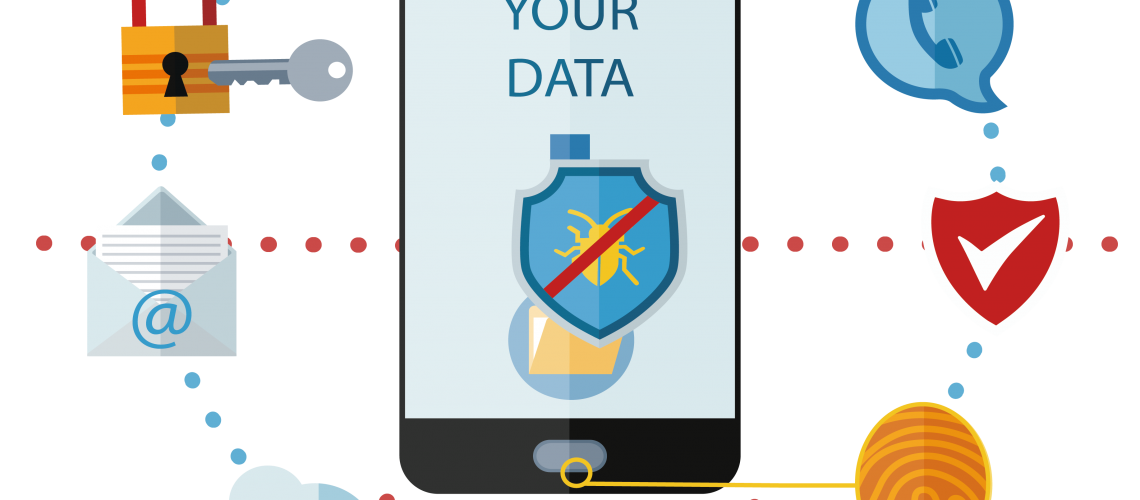Secure your smartphone from malware :
- Every day we hear about attacks involving smartphones, malware infection of Android/iOS/Windows, However, we have take a closer look at these mobile security attacks, you will be surprised to find that Android/iOS/Windows are not the one to blame. Few apps are made/built to have spyware’s that run silently in the background monitoring, phishing, stealing private data and of course adding fuel to the fire is the viruses.
- Cyber attacks haven’t changed nor stopped and we see a steep rise in increase of attacks because of cell phone and tablets used more today than ever before, cybercriminals are targeting mobile devices more often. Securing mobile devices is not just installing simple virus protection software, It has to have the best mobile security practices (i.e.MDM). As an individual or as a business, the last thing you want is an embarrassing breach to see you internal data published online for the world to see.
Few threats affecting mobile security :
- Application-based threats
- Web based threats
- Network based threats
- Physical threats
Few forms/types of threats :
- Malicious Apps
- Spyware
- Public WiFi
- No proper end to end encryption
- Unused or inactive Apps
- Unused or Stolen devices
- IoT mobile security
- Botnets
- Phishing
- No password protection or Using default passwords
What Corporates should do :
- Most of the MDM applications are Cloud-based, so updates are automatic and painless
- Monitoring on 24/7 basis and Remote configuration
- Passwords, blacklist / whitelists and other security policies enforcement
- Passcode enforcement/remote data wiping
- Restrict access to specific data and applications based on location
- Remote disconnection or disabling of unauthorised gadgets and applications
- Backup/restore functionality of corporate data
- Logging /reporting for compliance / statutory purposes
- Jailbreaking and rooting, alerts for users attempting to bypass restrictions
- Scalable, so new users and latest smartphones can be accommodated very easily
What Individuals should do :
- 1. Update your OS and apps promptly:
Update smartphone software as improvements are made to increase security and eliminate weaknesses, the more out of date your systems are, making you an easier target for hackers. - 2. Lock your devices:
Your phone may contain sensitive business information and you could even end up in the embarrassing position of informing your business that their data has been compromised, so implement fingerprint scanning and facial identification or a 4-6 digit passcode foo unlock the phone. - 3. Utilise built in mobile device management features:
Implement Find My iPhone and Android’s Find My Device when is a case of loosing and alternatively You can set the phone to delete all information after 05 to 10 false passcode tries. - 4. Use the Wi-Fi and Bluetooth wisely:
Most people don’t think twice about jumping on a free public Wi-Fi connection in areas like shopping centers, cafes, airports, parks or gyms, is often far less secure. It’s also a good idea to disable Bluetooth and Wifi options by default and enable only when in use. - 5. Use two-factor authentication wherever possible:
Use Two-factor authentication (2FA) is one of the least favourite security options around because, it requires an additional step and this feature can help you be secure from hackers. - 6. Manage app permissions:
Kindly grant apps permissions like access to the camera, the microphone, your contacts and your location to those apps which you need are the most important. Keep track of which permissions you’ve given to which apps, and revoke permissions them when not required. For iPhones, go to Settings and tap on Privacy for Android users can find app permissions in the Application Manager. - 7. Ignore spam and phishing emails:
We shouldn’t click on links in promotional emails, short links, or open suspicious attachments or run updates that are prompted through email (Including those that say they come directly from a company, like Microsoft or your company). Please check the email headers thoroughly before replying to any sensitive information. - 8. Back up your data:
Always back up your data and it protects your important documents and images in case of any loss. For an Android phone, make sure “Back up my data” and “Automatic restore” are enabled in the settings and then sync your data with Google. For an Apple Phone, go the settings and then back up to iCloud. - 9. Use an antivirus app:
Antivirus apps probed enhanced security to installed apps, PDFs, images and other files you download. Antivirus apps like Norton, Avast, McAfee and ESET can help overcome any possible threats. - 10. Know where your apps come from:
Don’t just download any app on your phone. Install apps only from App Store for iPhones and from Play-store for Android Phones.



